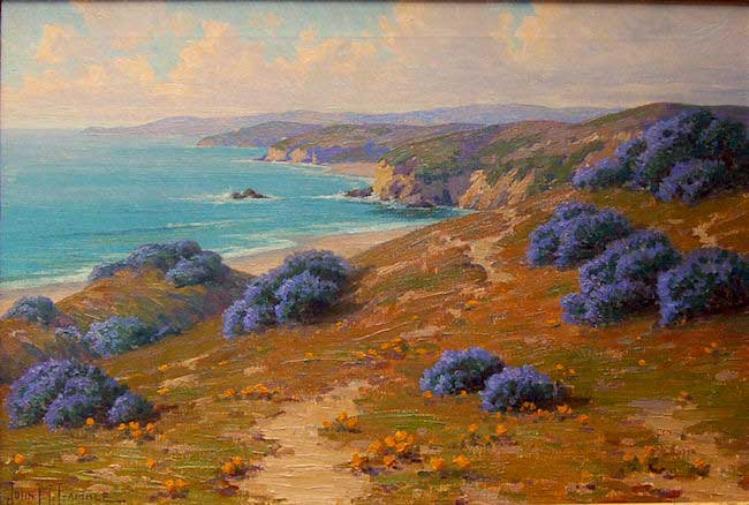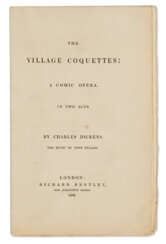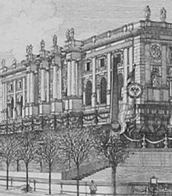gambling

Ulysses S. Grant, born Hiram Ulysses Grant, was an American politician and military leader who was the 18th President of the United States (March 4, 1869 - March 4, 1877).
Grant's father was a tanner and enrolled his son in the United States Military Academy at West Point, New York. Ulysses Grant distinguished himself in the Mexican-American War, then fought in the Civil War, was a brigadier general, and was given command of the District of Southeast Missouri. In March, 1864, Grant became lieutenant general and was given command of all the armies of the United States. In 1866, he was promoted to the newly established rank of general in the U.S. Army.
Grant continued as commander-in-chief after Lincoln's assassination and during the administration of U.S. President Andrew Johnson. However, the situation was such that Ulysses Grant won the next presidential election and became the 18th President of the United States on March 4, 1869. He was politically inexperienced and personally clean, but his time as president was marked by corruption and scandals. During his two presidential terms, Grant worked hard to re-unite the North and South, opposing the nascent Ku Klux Klan.
In 1877, after leaving the presidency, Grant traveled around the world with his wife, and everywhere he was received with glee. Then his attempts at business led to complete bankruptcy. Ulysses Grant spent the last years of his life writing his memoirs while battling poverty and throat cancer. With the help of writer Mark Twain, his two-volume work was published in 1885, two months before the author's death.


George Chinnery was a British painter best known for his work in India and China.
George studied at the Royal Academy schools, painting portraits and sketches, but in 1802, shortly after his marriage, trying to straighten out his family's financial situation, he traveled to India. In Calcutta, Chinnery became the leading artist of the British community in India. And in 1825 he went to China and lived in Macau for the rest of his life.
Chinnery painted portraits of Chinese and Western merchants, visiting sea captains and their families. Chinnery also painted landscapes (both in oil and watercolor) and made many vivid drawings of Macau residents of the time engaged in their daily activities. Among the heroes of his portraits are the Scottish opium merchants who patronized him. In addition to their artistic value, Chinnery's paintings also have historical value, as he was the only Western artist living in South China during the early to mid-19th century.
There are still many architectural sites in Macau recognizable from his sketches that have changed little since then. Today, Chinnery's paintings are in public and private collections around the world. The Macau Museum and the Macau Art Museum have a good selection of his work.


George Chinnery was a British painter best known for his work in India and China.
George studied at the Royal Academy schools, painting portraits and sketches, but in 1802, shortly after his marriage, trying to straighten out his family's financial situation, he traveled to India. In Calcutta, Chinnery became the leading artist of the British community in India. And in 1825 he went to China and lived in Macau for the rest of his life.
Chinnery painted portraits of Chinese and Western merchants, visiting sea captains and their families. Chinnery also painted landscapes (both in oil and watercolor) and made many vivid drawings of Macau residents of the time engaged in their daily activities. Among the heroes of his portraits are the Scottish opium merchants who patronized him. In addition to their artistic value, Chinnery's paintings also have historical value, as he was the only Western artist living in South China during the early to mid-19th century.
There are still many architectural sites in Macau recognizable from his sketches that have changed little since then. Today, Chinnery's paintings are in public and private collections around the world. The Macau Museum and the Macau Art Museum have a good selection of his work.


George Chinnery was a British painter best known for his work in India and China.
George studied at the Royal Academy schools, painting portraits and sketches, but in 1802, shortly after his marriage, trying to straighten out his family's financial situation, he traveled to India. In Calcutta, Chinnery became the leading artist of the British community in India. And in 1825 he went to China and lived in Macau for the rest of his life.
Chinnery painted portraits of Chinese and Western merchants, visiting sea captains and their families. Chinnery also painted landscapes (both in oil and watercolor) and made many vivid drawings of Macau residents of the time engaged in their daily activities. Among the heroes of his portraits are the Scottish opium merchants who patronized him. In addition to their artistic value, Chinnery's paintings also have historical value, as he was the only Western artist living in South China during the early to mid-19th century.
There are still many architectural sites in Macau recognizable from his sketches that have changed little since then. Today, Chinnery's paintings are in public and private collections around the world. The Macau Museum and the Macau Art Museum have a good selection of his work.



Henri Cartier-Bresson was a French artist renowned for his groundbreaking work in photography, particularly in the realms of photojournalism and street photography. Born on August 22, 1908, in Chanteloup, France, Cartier-Bresson's early artistic endeavors were in painting, which he began studying at the age of five. His transition to photography was marked by his adoption of a 35mm Leica camera in 1931, a tool that became synonymous with his work.
Henri Cartier-Bresson's photography is celebrated for its unique blend of spontaneity and composition, capturing moments that reveal deeper truths about their subjects. His theory of "the decisive moment" – that is, capturing an event that is ephemeral and spontaneous, yet significant – has had a profound influence on the field of photography. His work has been exhibited in prestigious venues such as the Museum of Modern Art in New York and is held in high esteem in art collections worldwide.
In addition to his personal achievements, Henri Cartier-Bresson was a co-founder of Magnum Photos in 1947, a cooperative agency for worldwide photographers that significantly influenced photojournalism. Later in his career, Cartier-Bresson returned to painting and drawing, demonstrating his lifelong commitment to the arts.
For art collectors and experts, Henri Cartier-Bresson's work offers a pivotal exploration of 20th-century photography, blending artistic vision with the unguarded moments of life. His influence extends beyond his images, shaping the way we perceive and engage with visual narratives.
To explore more about Henri Cartier-Bresson's influential career and works, and to stay updated on exhibitions or sales featuring his photography, you might consider subscribing to updates from art institutions or galleries that frequently showcase his work.



























































![M'CRINGER, Joel, [James Brydges Willyams] (1772–1820) artist and author, ROWLANDSON, Thomas (1756- 1827), etcher](/assets/image/picture_2944200/77b31/91476b76c0765b5487d15a6c89349c071689199200jpg__fix_374_244.jpeg)
![M'CRINGER, Joel, [James Brydges Willyams] (1772–1820) artist and author, ROWLANDSON, Thomas (1756- 1827), etcher](https://veryimportantlot.com/assets/image/picture_2944200/77b31/91476b76c0765b5487d15a6c89349c071689199200jpg__fix_374_244.jpeg)
























